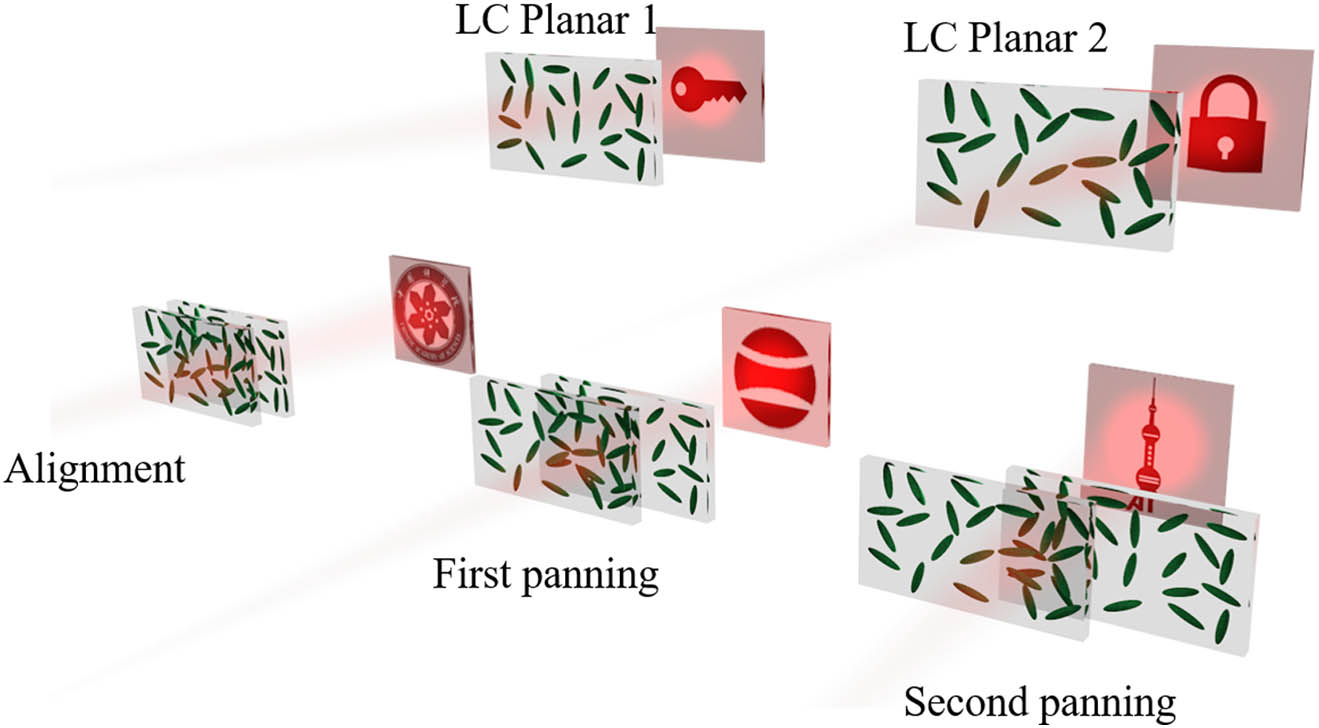Zhichang Mo, Yi Chen, Xiangyu Zhu, Zhouhao Zhang, Dawei Li, Jianda Shao, Yuanan Zhao, Jianguo Wang, "Optical secret sharing by multi-step liquid crystal planar doublet panning and coupling," Chin. Opt. Lett. 22, 080502 (2024)
Search by keywords or author
- Chinese Optics Letters
- Vol. 22, Issue 8, 080502 (2024)

Fig. 1. Schematic of the different holographic displays based on the panning and coupling liquid crystal doublet structure.

Fig. 2. Schematic of the geometric phase generation and coupling process. (a) Single-pixel generation of the geometric phase. (b) Two aligned pixels generate multiple geometric phases. (c) New coupled phase distribution generations due to panning motion.
Fig. 3. Flow charts of the iterative algorithm. (a) Single hologram generation process. (b) Generation flow for two-layer holograms and their coupled holograms. (c) Flow for outputting the final two holograms after introducing panning constraints.
Fig. 4. (a) Exposure light path diagram. The laser passes through a beam expander and a polarizer and then irradiates the square aperture; the light field is imaged onto the SLM via lens 1 and lens 2. The image field is modulated by the SLM and quarter-wave plate (QWP), and then it is imaged onto the surface of the sample again by lens 3 and lens 4. The charge coupled device (CCD) receives the reflected light from the sample to observe the exposure process; two beam splitting (BS) prisms are used to change the direction of the light path. (b) Experimental sample pictures under orthogonal polarizers and without polarizers, respectively.
Fig. 5. (a) Holographic display optical path diagram. (b) Phase diagrams of the final output. (c) Simulation and experimental results of holographic images under different panning and coupling conditions.
Fig. 6. (a) Holographic patterns after image processing. (b) Effect of the spot region on holograms. (c) Phase mismatch simulation result. (d) Contrast of no mixture and having a mixture process in the algorithm.
Fig. 7. Effect of changing the parameters of the algorithm iterations on the pattern correlation coefficients.

Set citation alerts for the article
Please enter your email address



